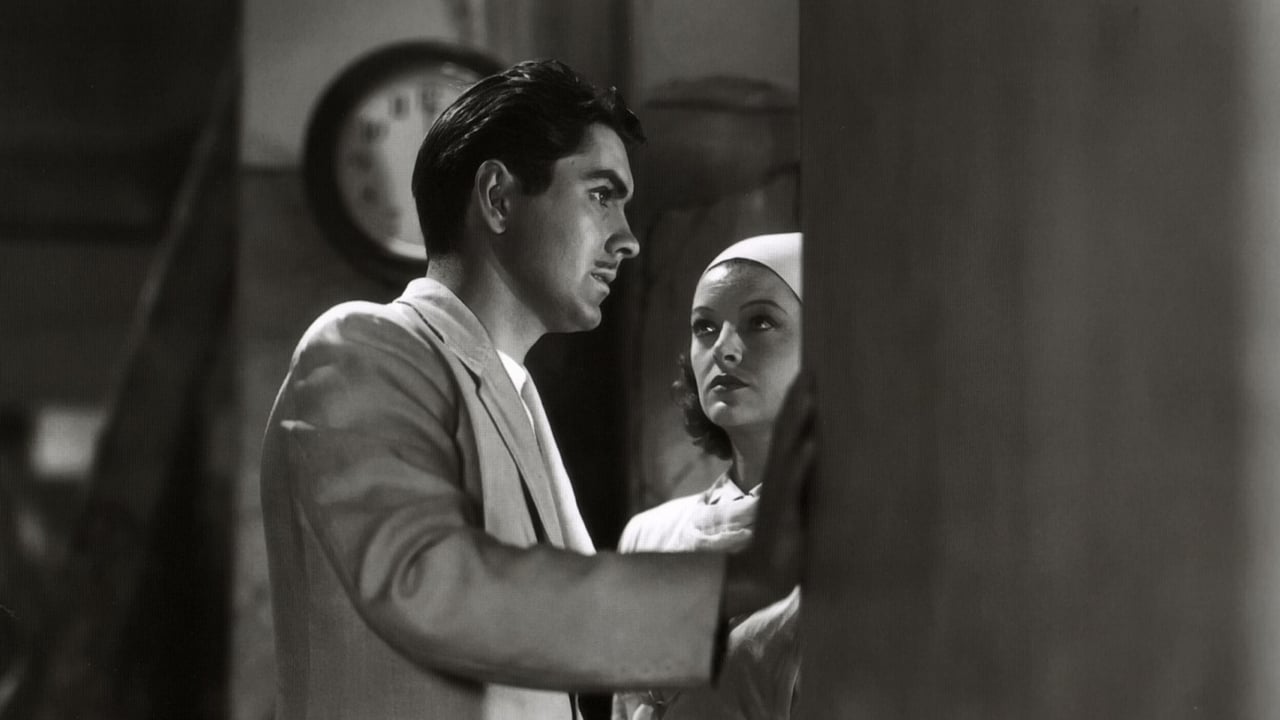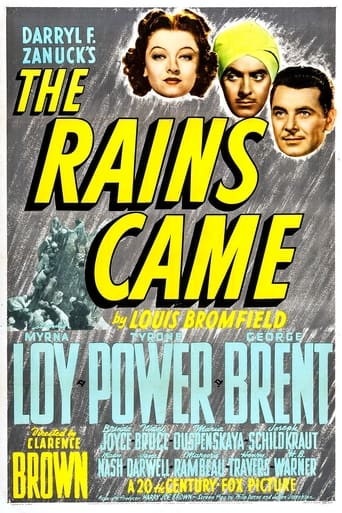

Lack of good storyline.
... View Morea film so unique, intoxicating and bizarre that it not only demands another viewing, but is also forgivable as a satirical comedy where the jokes eventually take the back seat.
... View MoreA film of deceptively outspoken contemporary relevance, this is cinema at its most alert, alarming and alive.
... View MoreGreat movie. Not sure what people expected but I found it highly entertaining.
... View MoreI had seen this film on TV growing up in the 60's and was as impressed with it as my mother had been. Besides a marvelous cast, superb special effects and a haunting romance, the film ably entices the viewer.Today, many years later, I find myself really loving the movie more than I ever had. Somehow I had never really seen the depth of romance between Lady Esketh (Myrna Loy) and the handsome Major Safti (Tyrone Power) she comes to love. The story of that love is subtly expressed in music at first when Rama Safti brings her attention to an Indian love song and translates it for her. The song is sublimely beautiful and affects them both deeply. After that the aristocratic Edwina Esketh who is bored with her life and in a loveless marriage begins to admire the unselfish Indian doctor who works hard for his people. In turn, the stalwart physician is attracted by Edwina, but strives to conceal his feelings, as he is continuing to pursue his work per the wishes of the Maharajah and Maharani. When disaster strikes with heavy rains and a tidal wave following, Lady Esketh wins the doctor's approval and admiration by becoming a nurse at the hospital and working tirelessly to help the patients. In addition to flooding victims, there are also many perishing of cholera.Before the final personal tragedy strikes, Dr.Safti expresses his love and admiration for Lady Esketh.Many, many lives are lost in the wake of the disaster, and the Major finds himself back on course to help the Maharani (Maria Outspenskaya) who has lost her husband in the flooding. Ironically, Lady Esketh's brutish husband (played out of character by Nigel Bruce) drowns, along with the valet he had verbally abused.One of the final messages is the timeless quality of love given unselfishly.Not to spoil it for those that have not seen this wonderful film, I will go no further except to say that it withstands the test of time.
... View MoreHigh gloss drama with first class special effects. In fact the film was the winner of the first Oscar given for special effects. Myrna somewhat surprisingly plays at least in the beginning a selfish slut, a high class slut but a slut nonetheless, redeemed by love and hardship. Tyrone Power although not at all believable as an Indian is capable and sincere and almost supernaturally beautiful. Even the customarily stolid George Brent after some initial stiffness is better and more relaxed than usual. Excellent production values and a first rate supporting cast make this an entertaining winner. Another classy enterprise from that golden year of 1939.Remade in color, but with a lot of the guts cut out, as the Rains of Ranchipur with Lana Turner and Richard Burton. That version is an okay time filler but this one is superior in every way.
... View MoreGosh, I'm soaked. That was some storm scene in "The Rains Came". Not only was there a rainstorm, it was compounded by an earthquake and subsequent flooding all over the place. Luckily it was only a movie and lucky for this movie, which was moving at a snail's pace until the storm. Beforehand, some of Hollywood's most dependable actors had been trying to move things along. There was Tyrone Power, George Brent, Myrna Loy, Henry Travers, Jane Darwell and the great Maria Ouspenskaya, just to name a few. I guess director Clarence Brown was trying to duplicate the pace of life in hot, stifling India, which necessarily must be slow.Then came the deluge. After some terrific flood footage, which earned the picture an Academy Award,the film becomes a soap opera, which normally turns me off. But this was different, it was absorbing and interesting, especially the dialogue between Power and Myrna Loy. The picture eventually becomes the property of Miss Loy, who gives one of her best performances while avoiding hysterics and descending into bathos.I thought this pulled the film out of the ordinary and eluded becoming another study in tedium and triviality. It was a good picture and I am glad I saw it. I never took a movie course, but I really appreciate watching professional actors acting their guts out.
... View MoreGrand Hollywood melodrama! Love relationships in India hold tightly despite the country being ravaged by earthquakes and floods. Ostensibly a production molded around the advancement of special visual effects circa 1939, all kinds of state-of-the-art trickery is employed: buildings crumble and the earth splits apart in hair-raising fashion. Predictably, the characters offer less interest, although George Brent does excellent work as an older man accepting the affections of a dewy-eyed nymph (this is possibly the best performance I've seen from Brent) and Myrna Loy is also very good as a socialite in love with a native. Flawed overall, yet an entertaining show. Remade in 1955 as "The Rains of Ranchipur". *** from ****
... View More